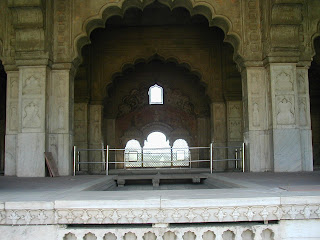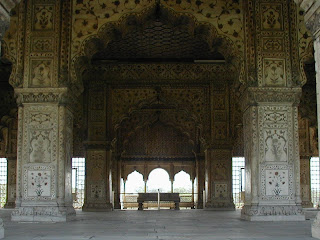There’s no better place to start than at the beginning, my
first “home” in Delhi – The Taj Mahal Hotel on Man Singh Road.
Arriving at 2am it was a restless first night back in 2001
and on opening the curtains before breakfast I was treated to the sight of an
elephant and a camel on their way along the main road below! Breakfast done it
was off to the office via the grandeur of India Gate to Sansad Marg.
As the business geared up the Finance team later moved out
to what had been an earlier office on Kasturba Gandhi Marg. It was here that I
developed a strange theme for my e-mail messages home as some pigeons nested on
my window ledge and so there was soon a weekly baby pigeon report to add to my
weekend days out!
The route on foot between the two offices took me past my
primary lunch establishment for 2001.
The Maharajah Mac back then was a rather tasty lamb burger
which sadly by 2004 had become a spicy chicken burger – still very nice though.
Weekends were split between a day out to one of the
destinations in the rest of the blog or taking it a little easier in Delhi with
some reading relaxation in one of the parks (Lodi Gardens mainly) or a bit of
shopping. Khan market was a particular favourite for its bookshops
as was Connaught place. The Palika bazaar was always a strangely claustrophobic experience being located beneath Palika Park.
as was Connaught place. The Palika bazaar was always a strangely claustrophobic experience being located beneath Palika Park.
A more modern shopping outing was to be had at one of the
first new shopping malls at Ansals Plaza. This Plaza
entered into my personal folklore as the last place I got into a fight!
Approaching the front of the queue in McDonald’s I put my hand in my pocket to
get some money and there was another hand already in there! Holding onto the ne’er
do well’s hand meant I could only deliver a swift left hook before being
bundled over from behind. The most bizarre element was watching the three man
pickpocket gang escaping as the security guard stood there holding the door
open with a stupid big grin on his face (no doubt highly amused at watching
some fat white bloke getting up off the floor shouting abuse).
Souvenir shopping at the tourist sites can mean a LOT of hassle and a more pleasant (albeit more expensive) option are the State controlled "Emporiums" dotted around central Delhi the largest being on Janpath opposite McDonalds.
In 2004 my initial home was the Grand Hyatt sort of midway
between Delhi “proper” and the new company office in Gurgaon.
Unfortunately with Delhi traffic conditions this meant a lot
of time sat in the car traveling to and from work so I moved on to the Trident
Hilton in Gurgaon.
This did save a lot of travel time for me and when I got a
room upgrade gave me a fantastic view from my hotel room.
The new offices at the time were on MG Road in Gurgaon which
was very much “under development” which added to the general chaos of getting
around. The big plus was that this office block did have
retail outlets on the lower floor including a music bar.
Lunch here became more varied with a choice of malls,
Metropolitan Mall for McDonalds or occasionally the cowboy themed Mexican
restaurant!
If I felt adventurous then by taking my life into my hands and
jaywalking across MG road got me to the Sahara Mall and Haldirams or a supply
of snacks from the Big Bazaar supermarket – YUM!
This time around my weekend days in Delhi started to include
a visit to the malls for the cinema which was an interesting experience. Troy
in a packed out “old school” big screen cinema was special and came with fellow
patrons arguing and trying to start a fight in the interval due to someone’s
constant chatter! I also got to support the Company cricket team when they had
a game and was a little disappointed that so few staff made any effort to give
the lads some support. While I didn’t get to play I did get to present the Man
of the Match award occasionally.
August 2004 was departure time once again and there was a
very pleasant “leaving do” in the aforementioned Music Bar.
Many thanks to Joydeep Mukherjee (my replacement) for making
the arrangements, Indira Lopchan for her singing, and of course Stuart Purdy the
Aviva India CEO for the opportunity!




















































